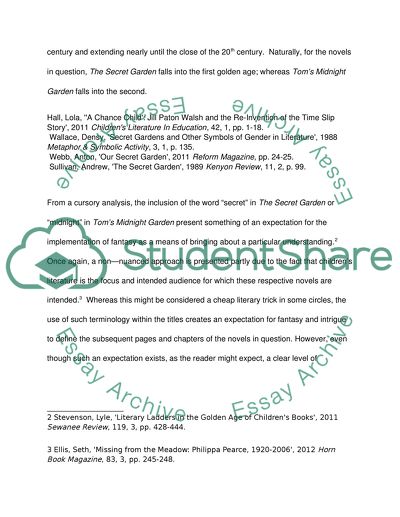Cite this document
(“Comparation of the use of fantasy in Tom's Midnight Garden and The Essay”, n.d.)
Retrieved from https://studentshare.org/english/1484315-comparation-of-the-use-of-fantasy-in-toms-midnight-garden-and-the-secret-garden
Retrieved from https://studentshare.org/english/1484315-comparation-of-the-use-of-fantasy-in-toms-midnight-garden-and-the-secret-garden
(Comparation of the Use of Fantasy in Tom'S Midnight Garden and The Essay)
https://studentshare.org/english/1484315-comparation-of-the-use-of-fantasy-in-toms-midnight-garden-and-the-secret-garden.
https://studentshare.org/english/1484315-comparation-of-the-use-of-fantasy-in-toms-midnight-garden-and-the-secret-garden.
“Comparation of the Use of Fantasy in Tom'S Midnight Garden and The Essay”, n.d. https://studentshare.org/english/1484315-comparation-of-the-use-of-fantasy-in-toms-midnight-garden-and-the-secret-garden.


